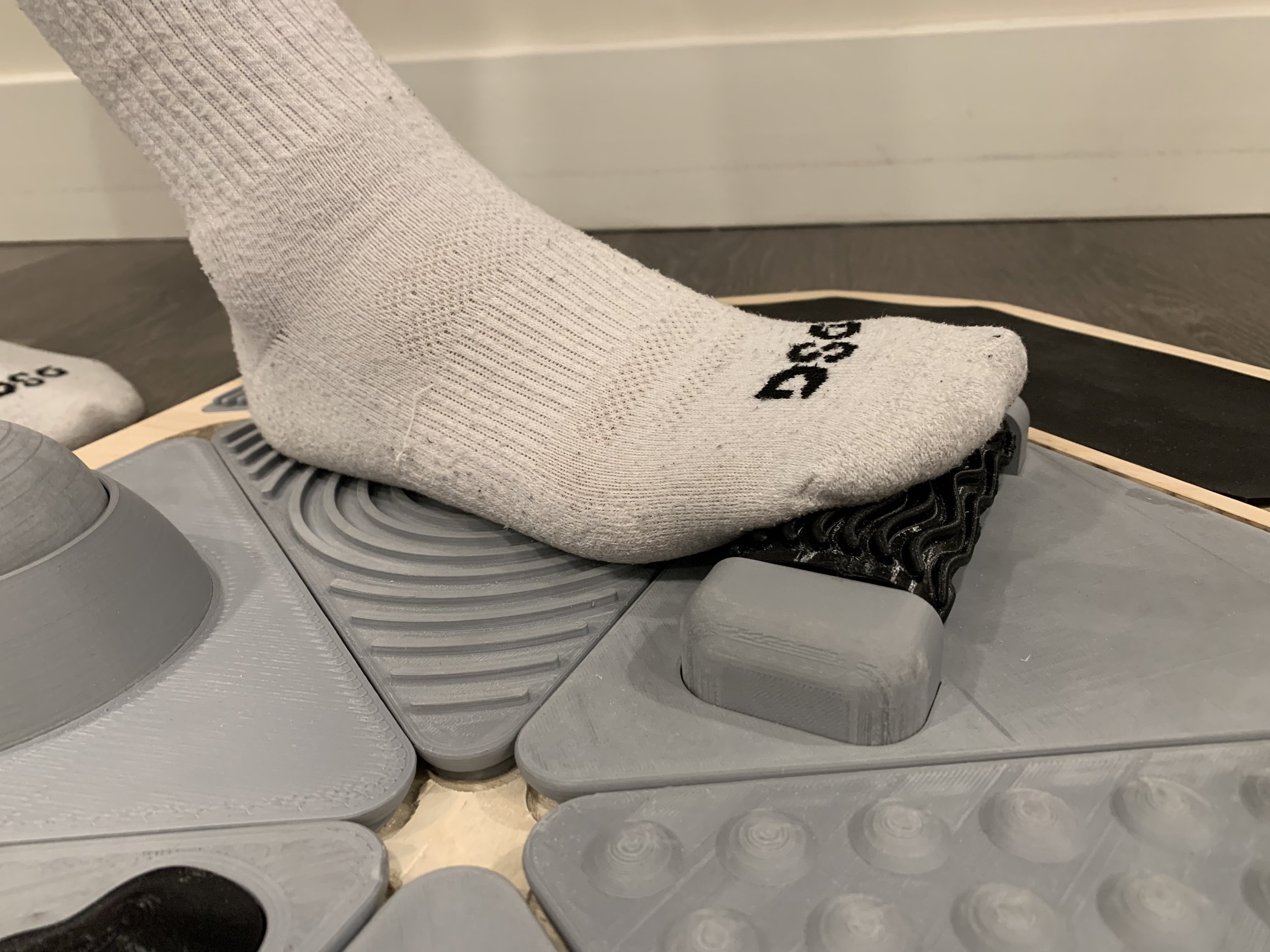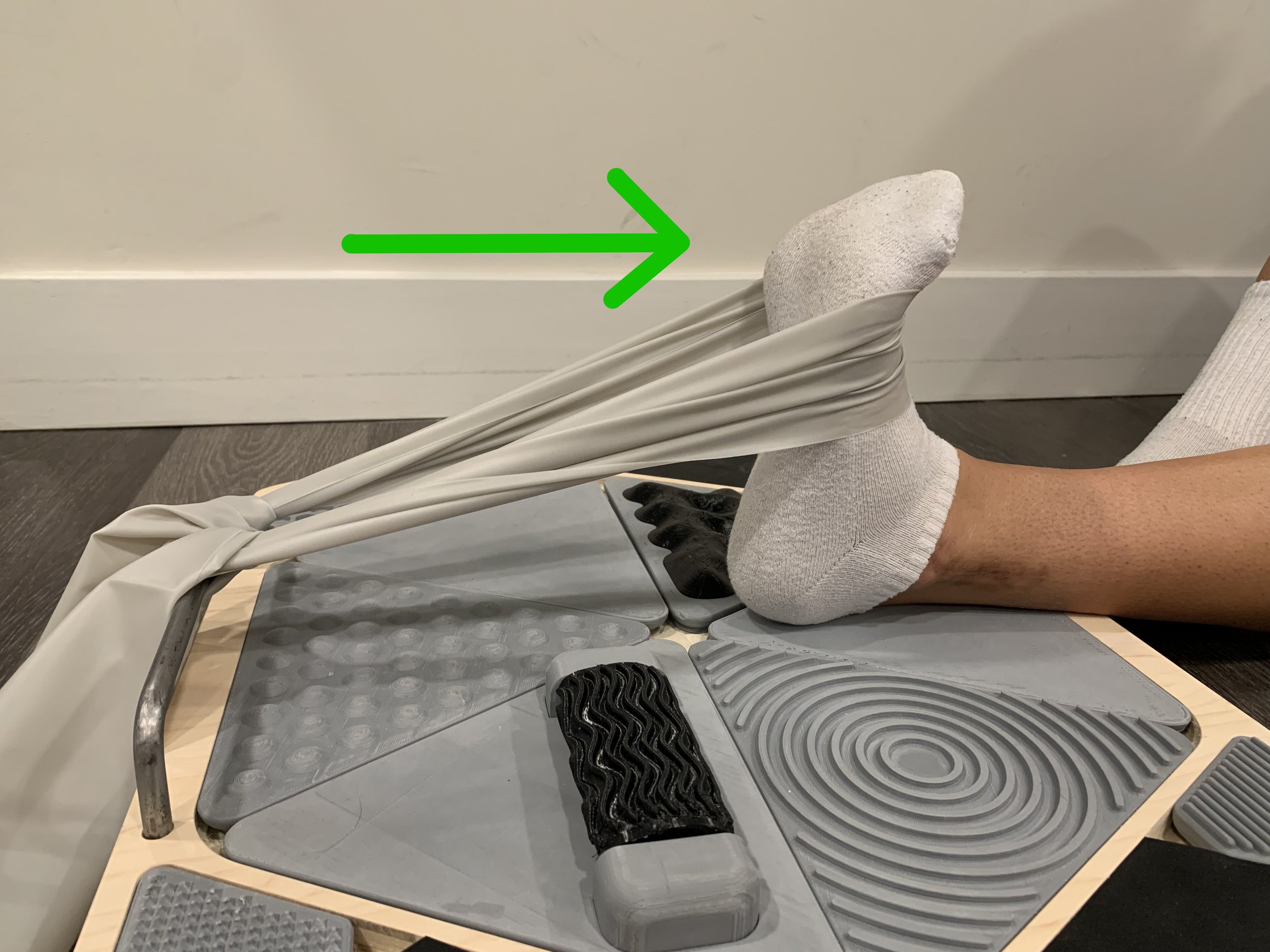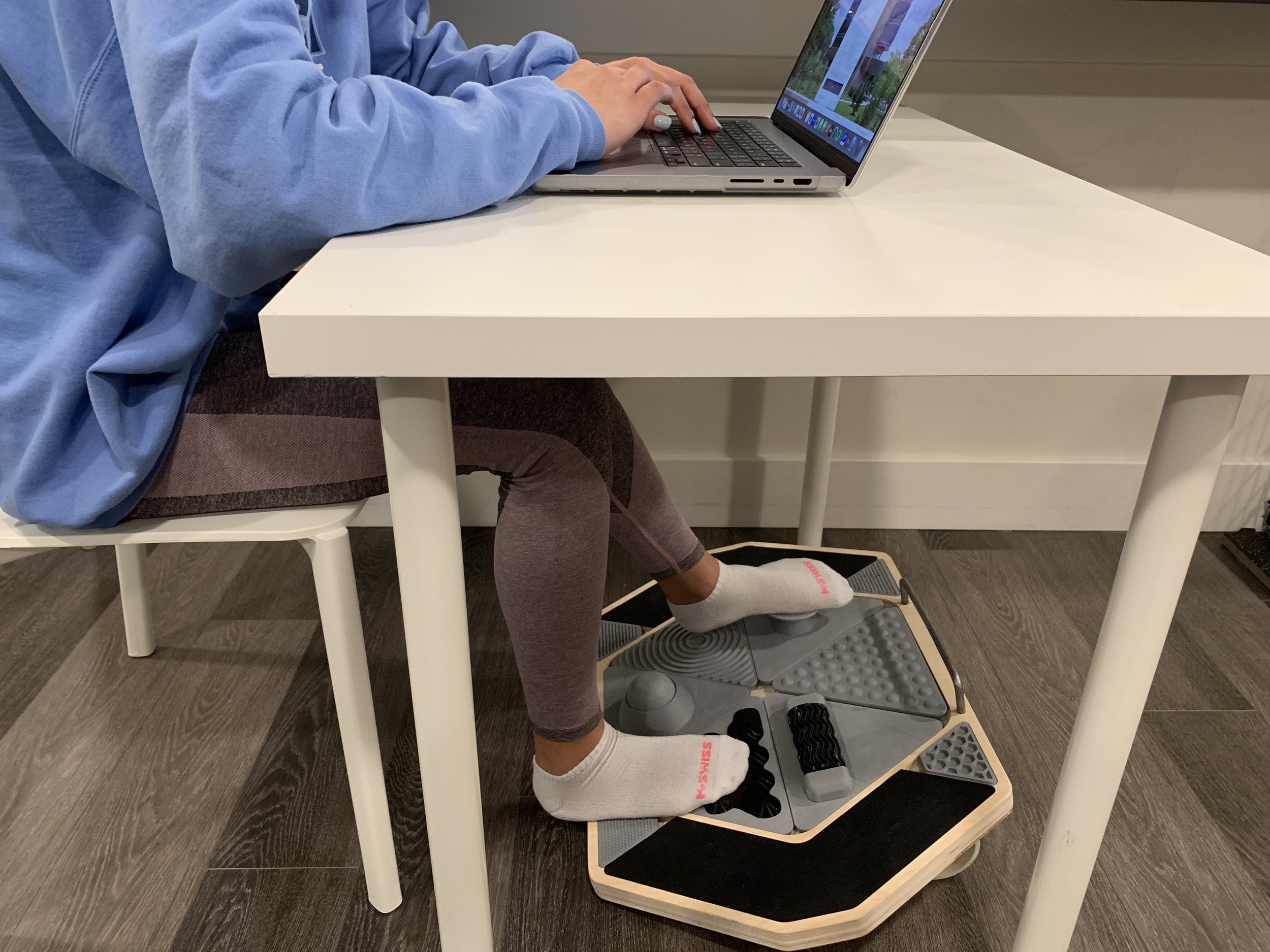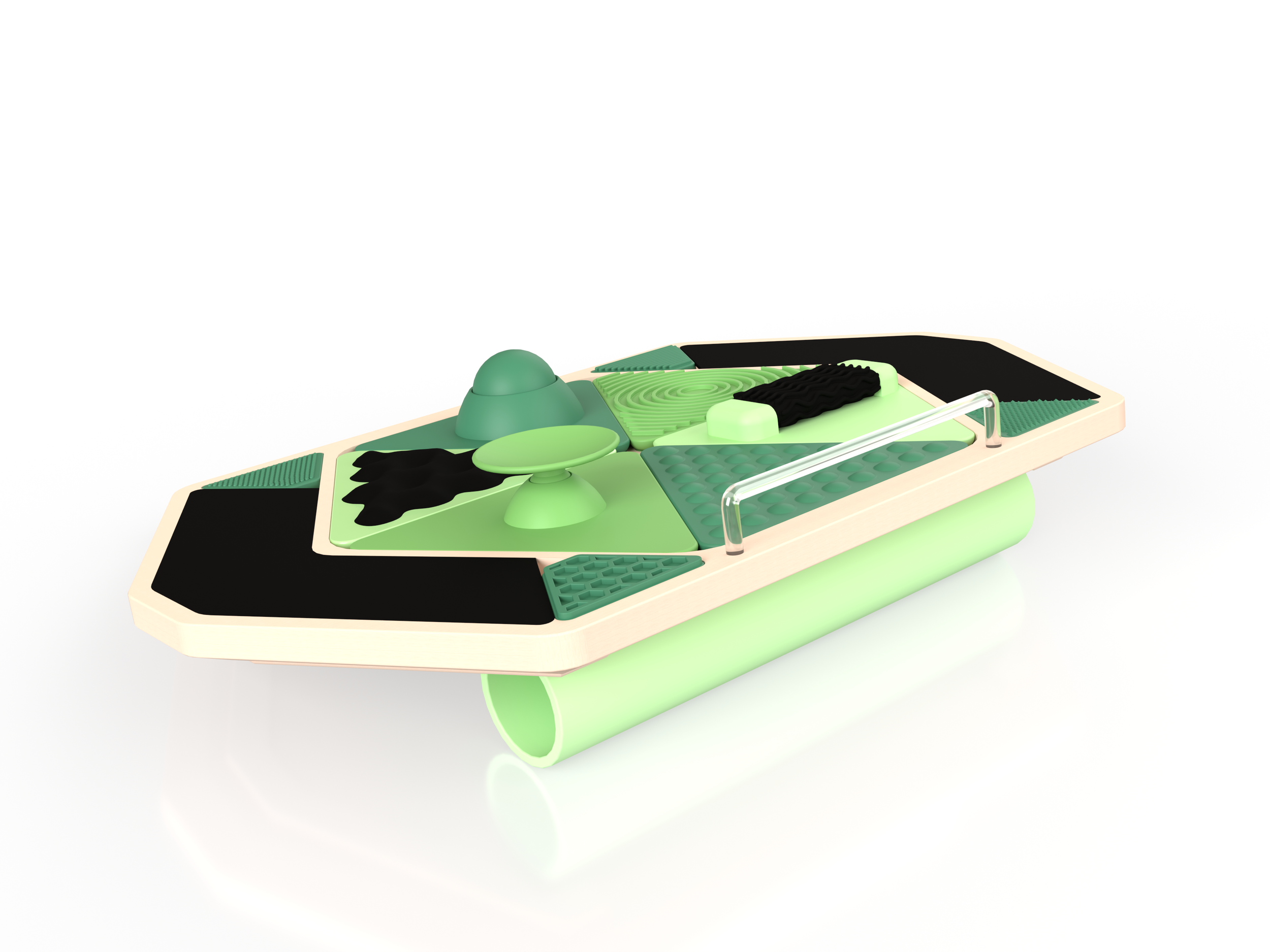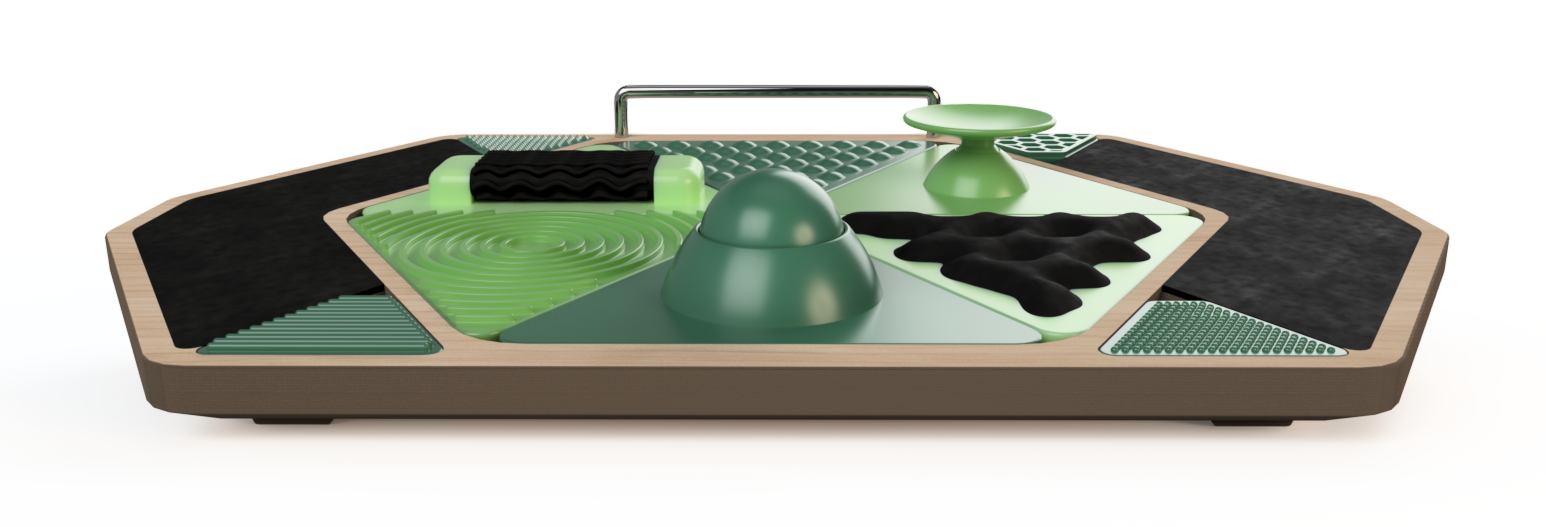Ortho Board
An assistive device for people undergoing physical therapy
The project brief was to create a passion project, something that I’d been wanting to make in a field of design that I hadn’t done much work in before. The final brief evolved into the following: The product will be a means of practicing lower leg exercises involving the ankle, foot, and toes, at home. The ultimate goal is to reduce the cost of visits to the Physical Therapist’s office and help the user save money.
Research
Target Audience
Young adults who were former athletes in college
Many still have injuries that get in the way of the life they wish to live.
They have little to no health insurance.
Can’t afford to make regular visits to the physical therapist’s office.
Professional Opinion
I spoke to a couple of physical therapy students that actively work with athletes at my school to rehabilitate their injuries and help them get back on the field. Here’s what I learned:
Many different types of injuries, and a handful of different exercises to treat them all.
Exercises consist of simple movements of the foot that can be comfortably moved in.
Keep resistance weight light for at-home exercises without a doctor.
Most exercises can be done sitting down, a few should be done standing up.
Resistance bands are widely used for many exercises.
I set out to come up with different features that would correlate and help with these movements and made mind maps for movements of the foot sole, ankle, and toes.
Ideation Sketches
from right to left
Bar to attach resistance bands to exercise in any direction.
Roller ball to massage across the sole.
Treadmill for toes to exercise ligaments along the sole of the foot.
Board Shape
Board needs:
Removable and rearrangeable parts.
The whole board is used as a balance board.
Tile system to move around features.
Tiles can be removed to use the board as a balance board.
This is what the design has developed into.
Three tiles with features can be replaced with black ones for balance.
All other tiles have interactive textures.
All can be rearranged to the preference.
includes a tube to place under the board, extra flat tiles, and a set of two resistance bands.
CAD Iterations
First
Working model and product in use
After finalizing the product, I used a 3D printer, a CNC machine, and a couple of other methods to make a working model and work out the use of the board and test it out.
Toe Pull/Push
Slant Exercises
Pulling Upwards
Pulling Sideways
Pushing Down
360 Sole Massage
360 Joystick Pivot
Balancing
Final
The study model was essential in seeing how someone might actually use the board I designed and revealed another potential use for it. It can be used when sitting at a desk working and this could mean something else. A secondary use of my product could be as a fidget toy of sorts. Someone might have it under their desk while working and fidget using their feet/legs as many people already do, and keep their hands and mind busy with work up on the desk. But for the time being, I decided to focus on the PT use of it.
Ideal Materials and Production Methods
1. Plastic components: injection molded polypropylene.
2. Soft components: mats, treadmill, soft texture tile, made from injection molded silicone.
3. Board: machined plywood.
4. Bar for Resistance Bands: Bent steel bar.
The green color was chosen according to color psychology principles, but other possible color combinations showed.
Lower leg/ankle/foot injuries are the second most common sports injury in college sports.
On average, physical therapy with no insurance can cost $4,200-$6,300.
pixabay.com
njboneandjoint.com
nyboneandjoint.com












